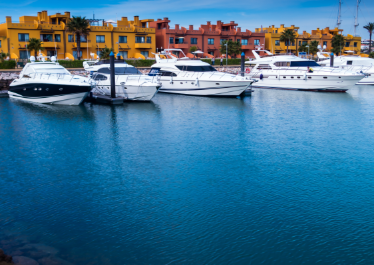Battery charger: how to operate at full power despite high temperatures?

The battery charger is a crucial part of an electronic system and must be able to operate at full power to ensure that the batteries in the boat or camper are properly charged. It is therefore important to take care of it and to anticipate any premature aging. However, electronic components are very sensitive to high temperatures in the charger's installation area. This constraint is all the more important nowadays as devices are subject to a trend of weight, size and price reduction. Electronic equipment is becoming increasingly compact, which increases the density of its electronic power and therefore the heat in the area. The full power operation of battery chargers despite high temperatures is therefore a strategic issue for the sector. Explanations.
High temperatures, what impact on battery chargers?
A battery charger can be installed in different parts of a vehicle or boat. These areas are more or less ventilated and confined: the operating temperatures vary significantly. Today, there are three ranges of operating temperatures for electronic components:
- The commercial range: the operating temperature varies from 0° to 70°C;
- The industrial range: the operating temperature varies from -40° to +85°C;
- The military range: the operating temperature varies from -55° to +125°C.
As soon as the operating temperature of the device exceeds the range of the component, the electronic performance of the device is strongly degraded. Accelerated ageing, risks of destruction, risks of thermal runaway... Many negative impacts can occur if the increase in operating temperatures is not anticipated. In order to prevent this and to ensure the proper functioning of the battery charger, two devices can be deployed.
Battery chargers: 2 methods to operate at full power despite high temperatures
1. Improve efficiency
Like any electrical appliance, the battery charger heats up during its use: this is called efficiency. In short, the charger consumes energy and gives it back. If a device consumes 500 watts and gives out 400 watts, it uses 100 watts to operate. These 100 watts will be dispersed as heat... which must then be evacuated to protect the system. The efficiency represents the ratio between the energy consumed and the energy absorbed. The higher the efficiency, the less thermal energy needs to be dissipated. To operate at full power, battery chargers must therefore be increasingly efficient.
2. Dissipating heat
Today's battery chargers have a very high efficiency, but still produce heat that must be dissipated. Two physical principles allow the product to be cooled:
Convection
Convection exists in two different ways: natural convection and forced convection. Forced convection consists of installing fans that blow air from outside onto the electronic boards to cool them. While this technique is inexpensive and simple to implement, it has two drawbacks. Convection implies that the product has ventilation holes: the device is therefore neither waterproof nor protected from dust.

Radiation
Radiation consists of installing a heat sink, often in the form of a radiator. This device operates a thermal exchange between the hot part of the product and the external environment. No vents are needed to allow fresh air to cool the system: the heat dissipation is done via the radiator. This radiation technique makes the product heavier and increases space requirements. To overcome this constraint, it is important to use components that produce as little heat as possible - in other words, components that are optimally efficient.
Dolphin, products optimized to operate at full power regardless of the temperature
As you can see, in order to operate at full power in high temperatures, battery chargers must be highly efficient and dissipate the remaining thermal heat.
Only with this double feature you will achieve optimal performance and extend the life of your devices.
Dolphin Charger understands this challenge and designs, manufactures and distributes a full range of robust and intelligent power conversion solutions. This marine and mobile specialist offers 4 ranges of battery chargers, from 10 to 100A. With an efficiency of 93%, Dolphin products are specially designed to dissipate thermal heat, which guarantees full power use whatever the temperature! Do you have a project? Have a question? Tell us about your needs.


